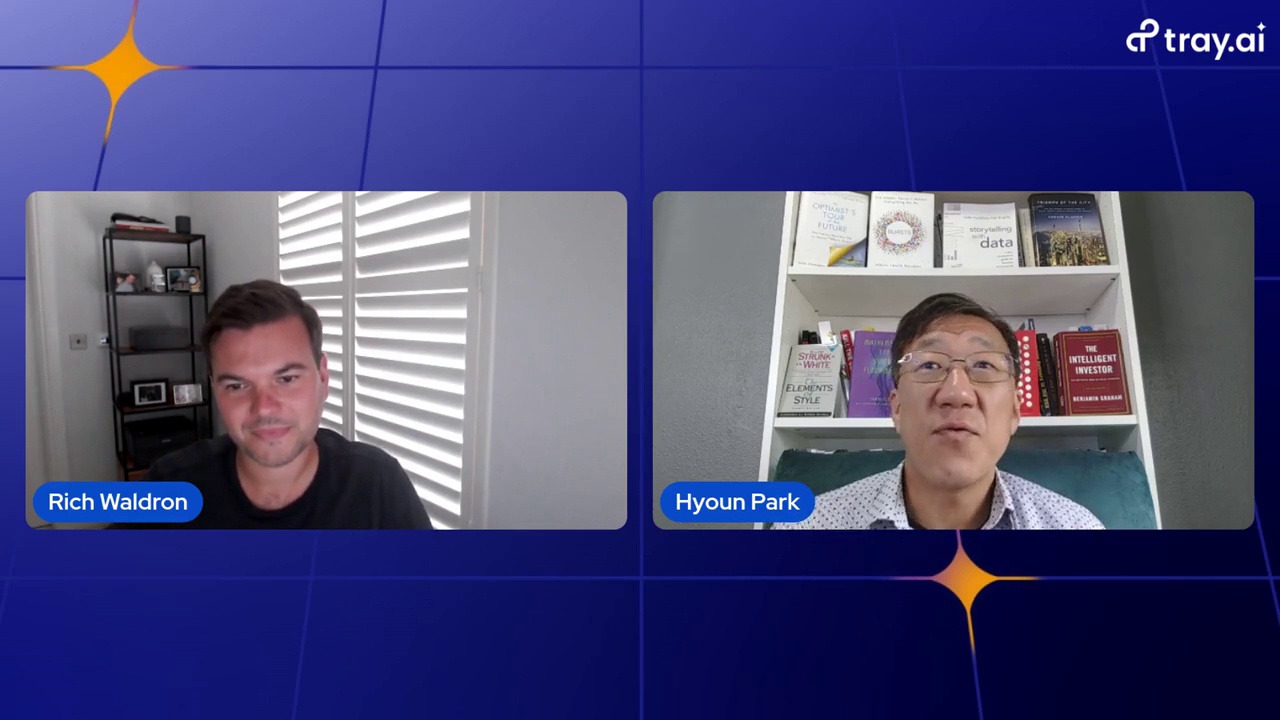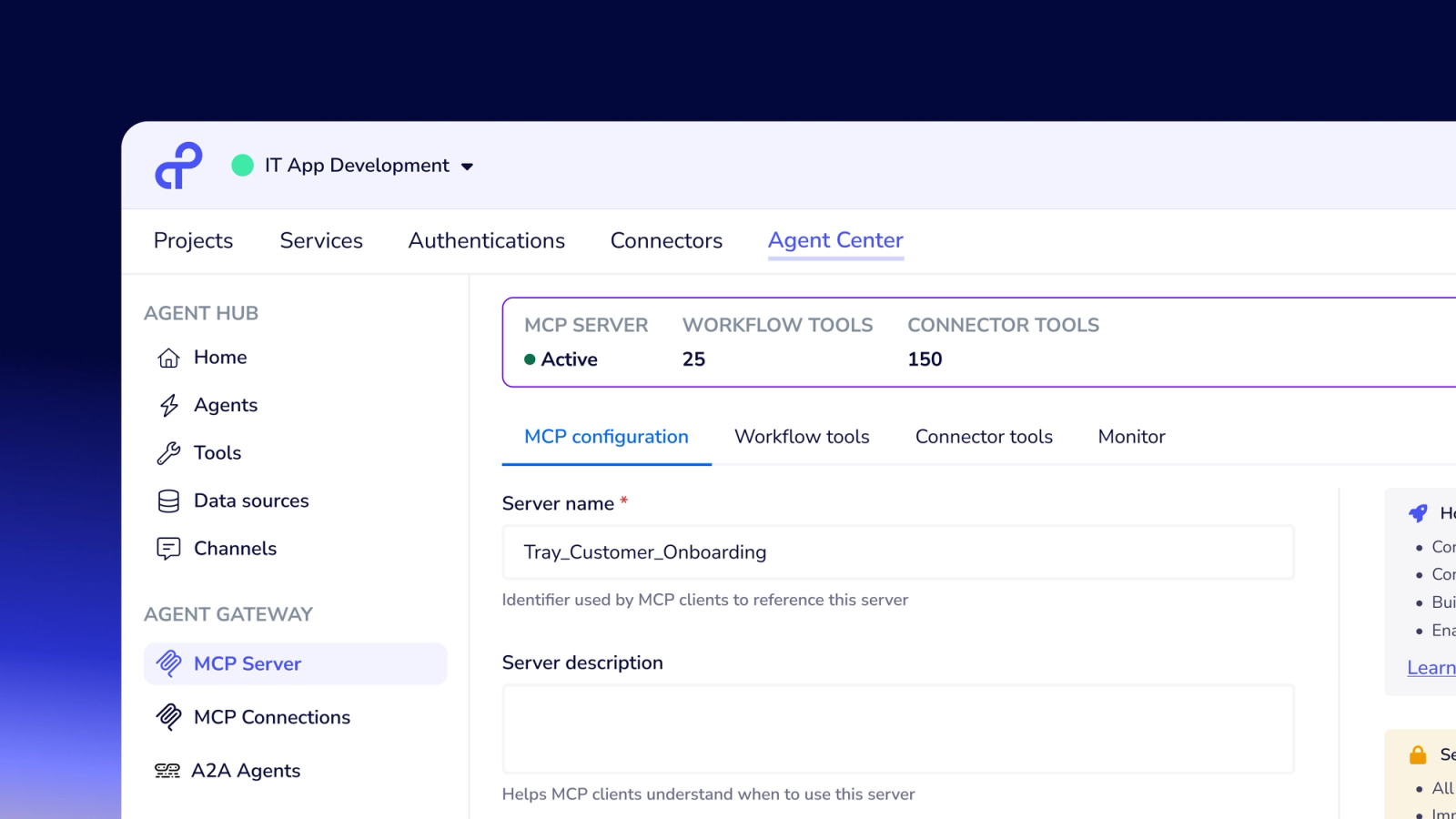LinkedIn Live
Expert conversation
What to do with your second agent
Learn from Tray.ai CEO Rich Waldron and Amalgam Insights CEO Hyoun Park on how to master scaling AI agents, from orchestration and ROI to scalable deployment.
You built your first agent. Now what?
Most teams can stand up a single AI agent. But scaling beyond that? That’s where things get complicated.
In this LinkedIn Live, Tray.ai CEO Rich Waldron and Amalgam Insights CEO Hyoun Park dig into what it really takes to orchestrate multiple agents, measure ROI, and avoid the chaos of disconnected agents.
What you’ll learn
- How to orchestrate and govern multiple agents across teams
- Why measuring ROI requires more than just usage metrics
- How to avoid fragmentation and build a scalable agent strategy
Session chapters
- Defining agents and enterprise readiness
- The realities of scaling agents
- Beyond the first agent
- Agents as evolving systems
- The multi-agent future
Featuring

speaker
Hyoun ParkCEO, Chief Analyst
speaker
Rich WaldronCEO



